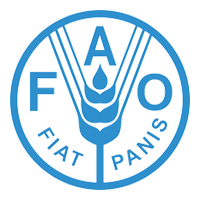Analyzing the functional dynamics of technological innovation systems : A scheme of analysis
Various researchers and policy analysts have made empirical studies of innovation systems in order to understand their current structure and trace their dynamics. However, policy makers often experience difficulties in extracting practical guidelines from studies of this kind. In this paper, we operationalize our previous work on a functional approach to analyzing innovation system dynamics into a practical scheme of analysis for policy makers. The scheme is based on previous literature and our own experience in developing and applying functional thinking. It can be used by policy makers not only to identify the key policy issues but also to set policy goals. © 2007 Elsevier B.V. All rights reserved.
Related Resources
Indicators of soil quality: A South-South development of a methodological guide for linking local and technical knowledge
This methodological guide was initially developed and used in Latin America and the Caribbean-LAC (Honduras, Nicaragua, Colombia, Peru, Venezuela, Dominican Republic), and was later improved during adaptation and use in eastern African (Uganda, Tanzania, Kenya, Ethiopia) through a South-South exchange...
Videos that speak for themselves: when non-extensionists show agricultural videos to large audiences
In 2008, an NGO showed videos about rice to farmers in 19 villages in Benin. A study in 2013 showed that farmers remembered the videos, even after five years had passed. In most of the villages at least some farmers...

Institutional Innovations for Building Impact-Oriented Agricultural Research, Knowledge and Development Institutions

FairTrade’s theory of change: an evaluation based on the cooperative life cycle framework and mixed methods
This study presents a quasi-experimental analysis of the impact of FairTrade certification on the commercial performance of coffee farmers in Tanzania. In doing so the study emphasises the importance of a well-contextualised theory of change as a basis for evaluation...
A Knowledge Share Fair and a KM4Dev meeting in Colombia, May 2010: involving people in a rich environment of dialogue on agriculture and knowledge management in Latin America and the Caribbean
During May 2010 the International Centre for Tropical Agriculture (CIAT) hosted two exciting events related to knowledge management (KM): The Knowledge Share Fair for Latin America and the Caribbean, funded by the Food and Agriculture Organization of the United Nations...


